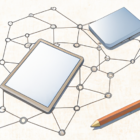In today’s digital age, technology continues to evolve, allowing machines to understand and interpret human emotions. This innovative field, known as Emotion Recognition Technology, harnesses the power of AI and machine learning to analyze facial expressions, voice tones, and behavioral cues. As a result, we are witnessing a profound transformation in areas such as marketing, healthcare, and customer service.
What is Emotion Recognition Technology?
Emotion recognition technology operates on the principle of sentiment analysis, using algorithms to identify and categorize emotions based on input data. Techniques such as facial recognition and voice analysis are employed to capture emotional responses, offering valuable insights into human behavior.
How Emotion Recognition Works
This technology can detect a variety of emotions, including happiness, sadness, anger, and surprise, by analyzing facial actions (using methods like the Facial Action Coding System – FACS) and vocal intonations. With access to vast datasets, machine learning models are trained to recognize patterns indicative of certain emotional states.
Applications Across Industries
Emotion recognition technology holds significant potential in various sectors. Here are some notable applications:
- Healthcare: It aids in monitoring patients’ emotional wellbeing, enhancing telemedicine services by allowing healthcare professionals to assess their patients remotely.
- Marketing: Companies utilize emotion recognition to gauge customer reactions via advertisements, optimizing their marketing strategies based on emotional engagement.
- Customer Service: Chatbots equipped with emotion recognition can provide personalized experiences by understanding customer sentiments and responding accordingly.
Challenges and Ethical Considerations
Despite its benefits, emotion recognition technology raises concerns surrounding privacy and consent. As this technology evolves, it is imperative for companies to prioritize ethical practices and transparency regarding data usage.
Conclusion
Emotion recognition technology is transforming how we interact with machines, paving the way for a more empathetic approach in various industries. By understanding emotions, we can create better user experiences, enhance customer satisfaction, and even improve mental health outcomes. The future is emotional, and the potential of this technology is boundless.




